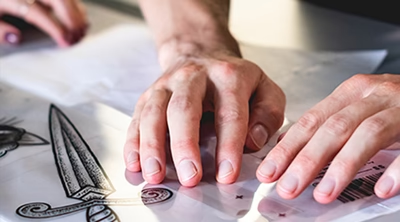Screen Printing: Top 5 Tips for Quality Artwork
Screen printing is among the most popular techniques that come with huge possibilities, not limited to just printing T-shirts. It comes with wider scopes and creates breathtaking prints customized for customer needs.
The multifaceted printing technique involves applying ink directly to the surface through a silk mesh screen. The method offers a cost-effective solution and can easily print artwork on t-shirts, bottles, and other surfaces.
While screen printing, there are always chances of fabric misprints, even if you are a professional designer. However, with practice and considering a few points, an individual can print produce high-resolution, crisp, and clear surface prints.
In this post, we've discussed some valuable tips that you must consider to avoid misprints. Let's get started with screen printing first.
What is Screen Printing?
Screen printing produces a stenciled design on the surface, including metal, fabric, plastic, glass, and more, with a mesh screen and ink. The technique starts with pushing ink to imprint designs beneath the surface. The light-sensitive screen printing chemicals and emulsions create multicolored designs with separate stencils.
Let's get deeper into the post and create smooth artwork on the surfaces!
Determine the Design Objectives
Before conceptualizing the design, determine the objectives of the customers. The professional audience prefers simple prints, while others may like bolder color prints. Create the artworks that speak to them.
Prepare the Ink for Screen Printing
A correct ink texture is responsible for printing fine designs. Too thick or too thin ink makes it challenging to regulate the printing quality. If the ink is too thick, add some reducer in a fine ratio so the ink quickly spreads.
Choose the Right Screens
You can't use the same screen for printing all the surfaces. The screen comes in varying mesh counts. Choose a screen with appropriate mesh counts as per your requirements to ensure high-quality printing results. The lower mesh count screens work well with simple prints. If you need photorealistic prints, a screen with larger mesh counts works wonders.
Always Do a Test Print
Always do a test print before you start screen printing. Doing a test run ensures that the device setup is done correctly and the end design will be flawless. Moreover, if any adjustments are needed, the professionals can make them without ruining the entire run.
Proofread the Artwork
When printing graphics, ensure that everything is double-checked and proofread before printing catches mistakes and wrongly prints it on the surface.
Cure and Clean Up
The last step in screen printing involves curing the design in a preheated oven for 30 seconds. The process needs time to settle the ink.
Maintain Quality Standards
Keep yourself updated with the latest innovations in the industry. Upgrade the skills and opt the new techniques for high-quality designs.
Wrapping Up
Screen printing is a simple technique to produce precise, bold prints on surfaces. If you are new to screen printing, follow the tips and prevent the most common artwork mistakes.
Hope this post comprehends the essentials of producing vivid colors on darker surfaces and giving a pleasingly tactile quality to printed surfaces!
.webp)


Comments
Post a Comment